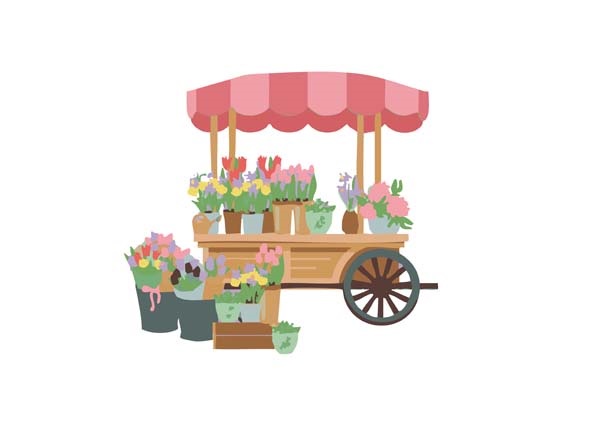Homebush West Town Centre

The Homebush West residential and shopping centre, Flemington Rail Station and Sydney’s Stockyards (now Sydney Markets) commenced development in the 1880s. Nearby residential and industrial development created demand for local shops. The oldest shops in Homebush West were built in the 1920s. Zoning changes in the late 1960s and 1990s increased nearby housing density which in turn has enlarged the size and scope of businesses in this shopping precinct to meet growing demands. Homebush West Town Centre is located on the south side of Flemington railway station with the famous Sydney Markets on the northern side. It is close to the major roads of Centenary Drive and Parramatta Rd. Parking is available in nearby streets. This town centre is characterised by the large number of authentic Chinese and Vietnamese restaurants, butchers, green grocers and herbalists as well as traditional Asian medical outlets.
Take a closer look...
70's walk-up

Flemington, now known as Homebush West, has a rich and layered history shaped by early land grants, market activity, and waves of immigration and housing development. One of the most defining features of the suburb’s identity is the presence of 1970s walk-up flats, built following the rezoning of land for higher density living. These three-to-four storey brick apartment blocks were part of a broader response to Sydney’s post-war housing shortage and have since become a distinctive architectural and social feature of the area. Today, they reflect the suburb’s multicultural character, affordability, and evolving urban fabric, forming a key part of Flemington’s visual and community identity.
Kookaburra

Flemington is home to a surprising variety of native birdlife, despite its urban density. Among the most iconic are kookaburras, whose familiar laughter can often be heard echoing through the neighbourhood’s parks and leafy streets. Alongside them, species like magpies, lorikeets, currawongs, and noisy miners thrive in the area’s mature trees and nearby green spaces. The presence of these birds adds a strong connection to nature, offering moments of calm and character in an otherwise busy, built-up environment.
Flowers

The Flemington Produce and Flower Markets have a rich history rooted in the suburb’s transformation from livestock yards to a major commercial centre. Since their relocation to Flemington in the 1970s, these markets have grown into iconic institutions, serving as Sydney’s primary hubs for fresh fruits, vegetables, and flowers. They play a crucial role in supplying retailers, florists, and food businesses across the city, while also attracting early-morning shoppers and industry workers. Today, the markets remain a lively and essential part of Flemingtons character and economy.
Grevillea, Acacia and Eucalyptus

Flemington’s native plant community reflects the natural heritage of the Sydney region, featuring species such as grevilleas, acacias, and eucalyptus trees that thrive in the area’s urban green spaces. These hardy plants provide essential habitat and food for local wildlife while adding texture and colour to the landscape. The brushbox trees, commonly planted along streets and in parks, contribute to the suburb’s leafy character and help maintain a connection to the area's original bushland environment.
The Crescent

The Crescent in Flemington holds a special place in the suburb’s post-war history as one of the earliest residential developments aimed at addressing the housing shortage for returning servicemen and their families. Built in the early 1950s, The Crescent became home to some of the first Housing Commission flats in the area, symbolising a new era of community building and social progress. Today, The Crescent remains a distinctive part of Flemington’s landscape, reflecting both its mid-century architectural style and its ongoing role as an affordable and vibrant residential precinct within Homebush West.
Cows

The Flemington Cattle yards were once a bustling centre of livestock trade located along Parramatta Road, serving Sydney’s agricultural and meat industries for much of the 19th and early 20th centuries. This historic site was vital for the buying and selling of cattle, sheep, and other livestock, supporting both local farmers and the city’s growing population. In the 1970s, the yards were cleared to make way for the development of the Sydney Markets, marking a significant shift from livestock trading to wholesale fresh produce and goods, which continue to define Flemington’s role in Sydney’s food supply chain today.
Markets

Multiculturalism has been a cornerstone of Flemington’s identity for decades, shaped by waves of migration that brought diverse communities to the area throughout the 20th century. The local stores and communities have long served as cultural hubs, offering a wide array of spices, foods, and ingredients that reflect the rich heritage of Flemington’s residents. This vibrant mix of cultures is celebrated daily within these spaces, where people come together to share traditions, tastes, and stories, making Flemington a thriving example of Sydney’s multicultural spirit.
Spices

Multiculturalism has been a cornerstone of Flemington’s identity for decades, shaped by waves of migration that brought diverse communities to the area throughout the 20th century. The local stores and communities have long served as cultural hubs, offering a wide array of spices, foods, and ingredients that reflect the rich heritage of Flemington’s residents. This vibrant mix of cultures is celebrated daily within these spaces, where people come together to share traditions, tastes, and stories, making Flemington a thriving example of Sydney’s multicultural spirit.
Old Flemington Signage

Flemington Railway Station, opened in 1884 and relocated to its current site on The Crescent in 1924, has long been a key part of Homebush West’s transport network. The station’s old signage and heritage features reflect its rich history, linking the area’s past with its present. Situated close to Sydney Markets, Flemington Station continues to serve as an important connection point for both residents and workers, maintaining its role as a bustling hub in the community.